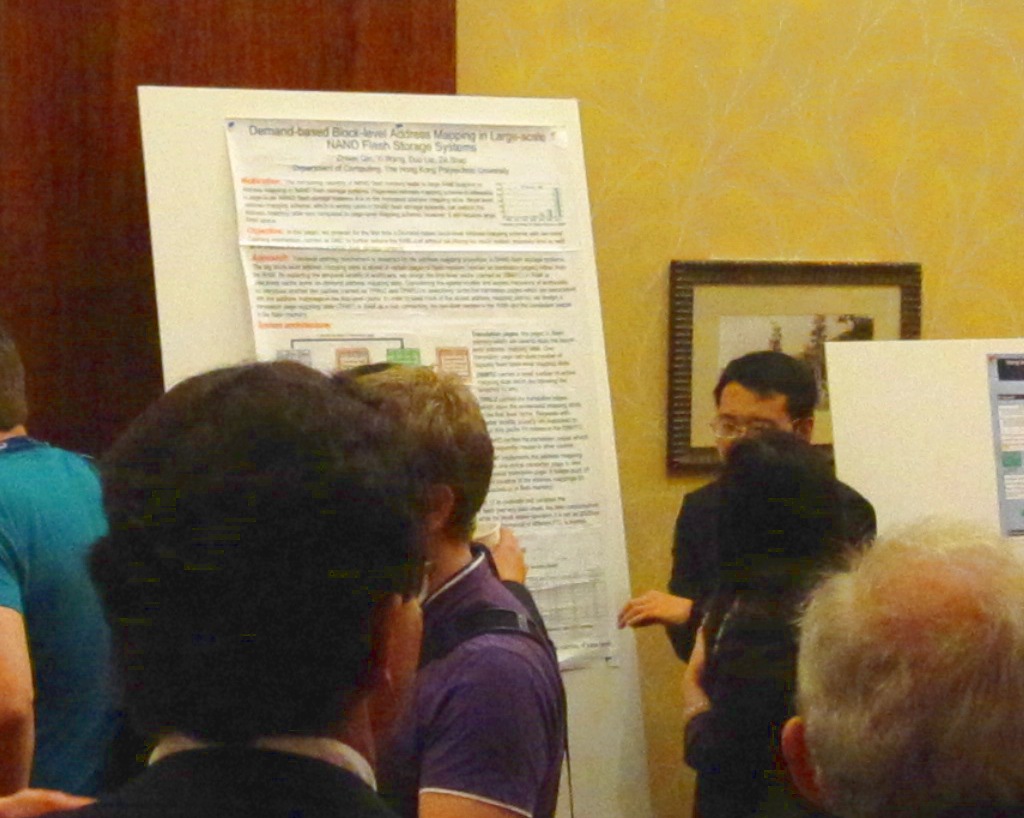Having made my first poster for the poster session of a scientific conference, I observed some mistakes I made. Here is, what i will do better next time.
Posters have two goals: Connecting and Illustrating. The art of poster design is to address both of them at the same time.
Connecting
The first goal of a poster is to create a connection with the audience and initiate a conversation. In this regard, a poster is an advertisement and it may as well use the corresponding techniques. For example, catch-phrases or questions can provoke a reaction, which leads to talking. Similarily, a concise statement of features may pique curiosity.
The conversation initiation is not limited to the topic of the poster. For example, someone may approach you just because he knows your university, co-author, advisor, tools, or competitor. This is why logos and names should be presented prominently.
In terms of layout the connecting elements (catch phrases, logos, names) should be at the top, where they can be seen widely, even if there are people in front.

Use big fonts and colors to make them stand out! Yet, be careful not to look cheap, because scientists usually sneer at advertisement. High-gloss paper is worth the price, because the poster looks more "professional".
Illustrating
When the conversation with one or more persons has started, the next task is to present. The job of the poster is now to illustrate your talking. For scientific explanations, diagrams are often necessary to explain the complex things. Visual examples are helpful for discussions.
The design of illustrating elements is relatively easy. For the most part you can reuse diagrams from your paper or presentation. You should try to make these parts self-explanatory, so your poster works for you even if you are away.
In the case, that you do not have the time to design a poster, a good alternative is to simply print the presentation slides. They should already include everything necessary to explain your work. Cheap method, but better than nothing.
Support
Sometimes the poster itself may not be sufficient, so you should have additional material available, if the conversation goes into details. For example, have a printout of your paper and related work to look up definitions or exact numbers. Additionally, scratch paper may be useful for brainstorming about new ideas and problems.